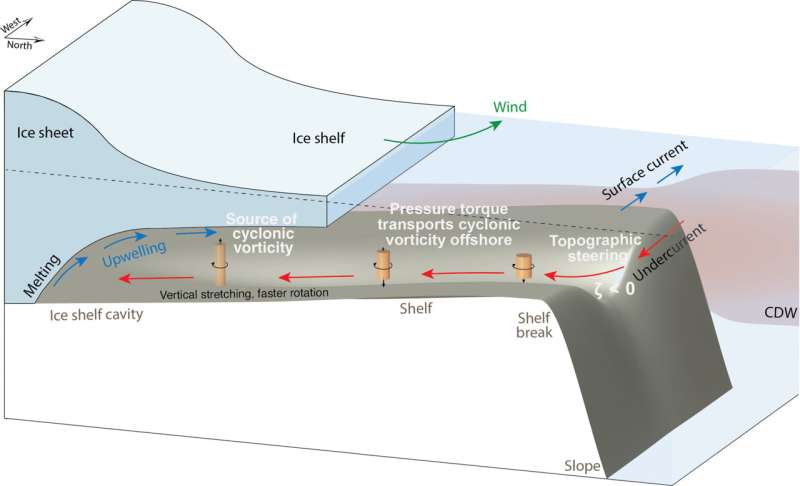
The West Antarctic Ice Sheet has been losing mass in recent decades, contributing to global sea level rise. If it were to melt entirely, global sea levels would rise by around five meters.
It’s known that Circumpolar Deep Water (CDW), a water mass that is up to 4°C above local freezing temperatures, is flowing beneath the ice shelves in West Antarctica and melting them from below. Since so much of the West Antarctic Ice Sheet lies below sea level, it is particularly vulnerable to this warm water intrusion and may further retreat in the future.
Previous observations and models have revealed that eastward undercurrents are transporting this warm water to cavities under the ice shelves. Despite its significance, the mechanism driving this undercurrent has remained elusive.
Professor Alberto Naveira Garabato, from the University of Southampton, a co-author of the paper, said, “Our findings suggest a positive feedback loop: as the ice shelf melts more rapidly, more freshwater is produced, leading to a stronger undercurrent and more heat being transported toward the ice shelves.”
“This cycle could speed up the melting of ice shelves, potentially making the West Antarctic Ice Sheet less stable in the future.”
Dr. Alessandro Silvano from the University of Southampton, a co-author on the study, said, “These simulations reveal that this deep current conveying warm waters toward the ice shelves is driven by the very same ice shelf melting that such warm waters cause.”
Dr. Silvano added, “Scientific models that don’t include the cavities under ice shelves are probably overlooking this positive feedback loop. Our results suggest it’s an important factor that could affect how quickly ice shelves melt and how stable the West Antarctic Ice Sheet is over time.”